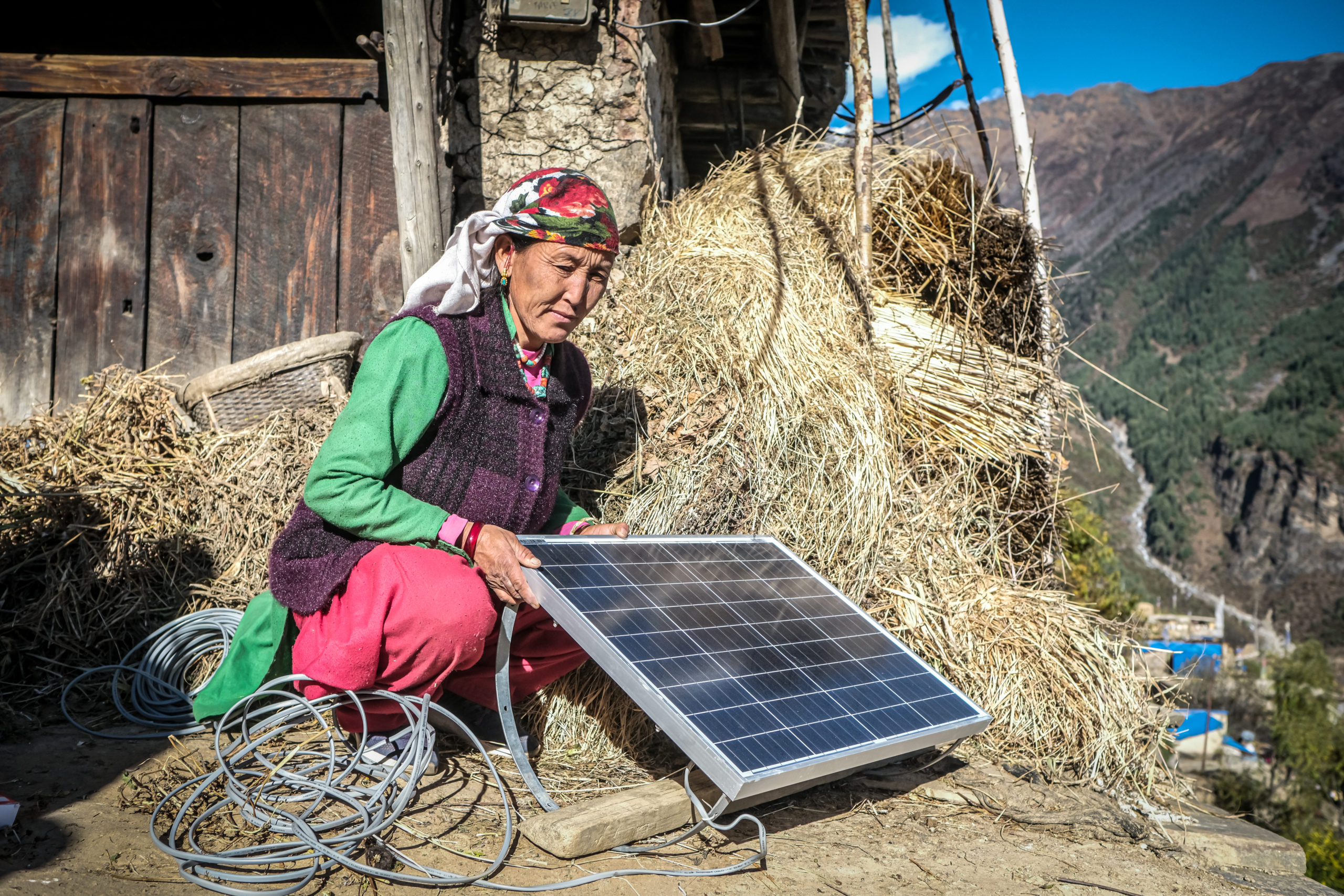3 Nepal Women Provide Light for Remote Villagers
Earlier this year, our 3 Solar Mamas installed 220 Solar Home Lighting Systems for families of remote regions in Humla, Nepal. Since then, our Barefoot College International team has conducted surveys to understand the impact of the initiative on rural Nepalese communities.
The survey data collection included the cooperation of 100 Nepalese beneficiaries who live in the 3 Humla District villages. These beneficiaries include women, children and men, who shared a breadth of ways their lives have been affected by the installation of renewable energy.
Livelihood Skills
Our first line item is the increase of livelihood skills being used for income generation. Where before it was mostly impossible to work during the evening when light is scarce, solar light now enables women to work later. Only 17% of women in the villages were using skills for income generation, whereas now 86% have reported that they’re working. These include skills such as sewing, cooking and catering and weaving.
Light Sources
Light sources and expenses for light sources have drastically improved. Candles and kerosene made up 13% and 5% of light sources respectively, which cost a family in Nepal an average of INR 474 per month. After receiving solar electricity, the use of both has reduced to zero. Battery-powered torches, used by 100% of families, have been reduced to 21% as families now use their solar torches.
 A Solar Mama installs the light inside of a village home
A Solar Mama installs the light inside of a village home
Of the families surveyed, none were previously satisfied with the brightness of their light sources. Once they received solar-powered light, 97% say that the light is adequate for all indoor activities. This allows children to study during the evenings. 99% of children say they have shifted from studying in early morning hours before school to being able to study before bed, likely increasing their grades and offering them better sleep schedules.
Reduction of Black Smoke within Nepalese Households
Black smoke emission, a byproduct of the burning of substances such as kerosene and wood for light, is toxic to inhale. Many villagers face medical issues such as respiratory problems, cancer and eye irritation. After receiving solar light sources, there is a 97% reduction in the inhalation of black smoke. We aspire to continue decreasing this number so that no families suffer from this avoidable health risk.
Women empowerment in rural Nepal communities has been a primary factor in our rural resilience mission. Following the training of Solar Mamas in communities and their influence on other local women, the percentage of women who participate in decision-making has increased from 32% to 79%. Additionally, women solely or jointly making decisions on household expenditures have increased from 17% to 52%.
 Onlookers watch while the Solar Mamas install solar panels and home lighting systems
Onlookers watch while the Solar Mamas install solar panels and home lighting systems
Far-Reaching Benefits for Nepal and Beyond
Beyond direct effects within these villages, this initiative has helped to reduce CO2 emissions by 188 metric tons over the lifetime of these solar products. More than 1500 people have gained access to this solar energy, thereby motivating them to decrease their fossil fuel consumption and inspiring many others nearby who witness its benefits.
 Solar Mama Laiku Lama prepares to install a solar panel on a village home, Humla, Nepal
Solar Mama Laiku Lama prepares to install a solar panel on a village home, Humla, Nepal
Barefoot College International intends to expand this program within Nepal in partnership with Women Light the World and associated ground partners. When you support this program, it means that more women are able to enrol and gain the access to valuable education no matter what their prior literacy or education level is.



